Chester-le-Street, Durham
Up to 1834
A parliamentary report of 1777 recorded local workhouses in operation at Chester-le-Street and Lambton, both able to accommodate up to 100 inmates.
After 1834
Chester-le-Street Poor Law Union formally came into existence on 4th January 1837. Its operation was overseen by an elected Board of Guardians, 32 in number, representing its 20 constituent townships as listed below (figures in brackets indicate numbers of Guardians if more than one):
Parish of Chester-le-Street:
Birtley (2), Chester-le-Street (3), Edmondsley, Haraton (3), Lambton, Lamesley (4), Great Lumley (3), Little Lumley, Ouston, Pelton, Plawsworth, Urpeth, Waldridge.
Parish of Houghton-le-Spring:
South Bidick, Bourn Moor, Cocken.
Parish of Washington:
Barmston, Great and Little Usworth (2), Washington (2), Witton Gilbert.
The population falling within the Union at the 1831 census had been 17,178 with townships ranging in size from Cocken (population 71) to Lamesley (2,387), Great Lumley (2,301), Haraton (2,171), and Chester-le-Street itself (1,910). The average annual poor-rate expenditure for the period 1834-36 had been £7,180 or 8s.4d. per head of the population.
Initially, the Chester-le-Street Union made use of existing parish workhouse accommodation at Chester-le-Street and Lambton. However, a new union workhouse was eventually built on Durham Road in Chester-le-Street in 1854-6. It was designed by Matthew Thompson who was also the architect of the workhouses at Hartlepool, Houghton-le-Spring and Weardale. The Chester-le-Street workhouse location and layout are shown on the 1895 OS map below.
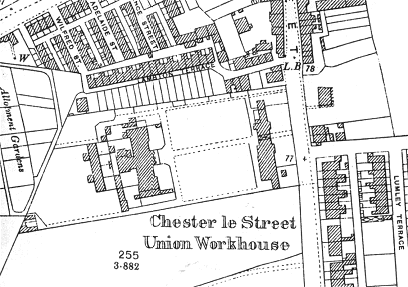
Chester-le-Street workhouse site, 1895
The workhouse originally comprised an entrance block at the east with central archway. The T-shaped main block stood some distance to the rear.
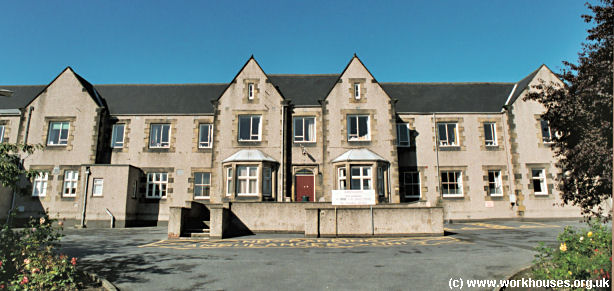
Chester-le-Street main block from the east, 2001.
© Peter Higginbotham.
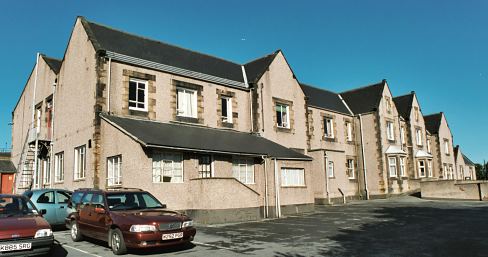
Chester-le-Street main block from the south-east, 2001.
© Peter Higginbotham.
Behind the main block stood the original workhouse infirmary, now demolished. In 1896-8, a number of additions were made including a new infirmary and isolation block at the south of the workhouse, and a new mortuary.

Chester-le-Street workhouse site, 1915
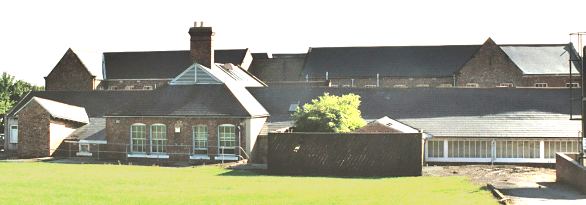
Chester-le-Street rear of main block from the west, 2001.
© Peter Higginbotham.

Chester-le-Street infirmary from the north-east, 2001.
© Peter Higginbotham.
In 1901, John Thomas Dunn was appointed master of the workhouse. Here is a picture of him with his wife Rhoda (the workhouse matron) and their children John and Gladys taken in around 1912.
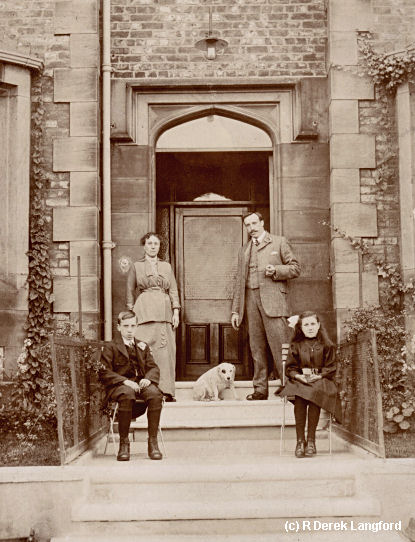
John Thomas Dunn and family, c.1912.
© R Derek Langford.
At Christmas, the workhouse chapel was decorated as can be see in the view below.
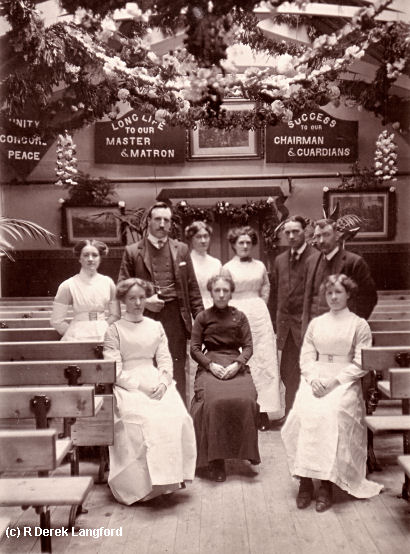
Chester-le-Street workhouse chapel, c.1912.
© R Derek Langford.
And, from the same date, John Dunn, Rhoda Dunn, and the workhouse staff.

Chester-le-Street workhouse chapel, c.1912.
© R Derek Langford.
In 1927, during a miners' industrial dispute, the Chester-le-Street Board of Guardians was suspended for making relief payments to unmarried miners, contrary to a ruling by the Ministry of Health. In their place, three new Guardians were appointed by the Ministry to run the Union.
In 1948, the former workhouse became a general hospital. In recent years, as Chester-le-Street Hospital, it provides care for the elderly. The workhouse blocks have now been replaced by modern buildings.
Children's Homes
In 1914, the union acquired land on Durham Road, about a quarter of a mile to the south of the the workhouse, on which to erect cottage homes for up up to 42 children. In 1930, the homes were taken over by Durham County Council. The building is nown NHS rehabilitation unit known as Primrose Lodge.
Staff
Inmates
Records
Note: many repositories impose a closure period of up to 100 years for records identifying individuals. Before travelling a long distance, always check that the records you want to consult will be available.
- Durham County Record Office, County Hall, Durham DH1 5UL. A variety of union records survive, though little relating to workhouse inmates. Holdings include Guardians' minutes (1840-1930, with gaps).
Bibliography
- Higginbotham, Peter The Workhouse Encyclopedia (2014, The History Press)
Links
- None.
Acknowledgment
- Many thanks to R Derek Langford for kindly allowing use of the vintage family pictures, and also to Linda Rockett for her assistance and for contributing the 1901 census extract.
Unless otherwise indicated, this page () is copyright Peter Higginbotham. Contents may not be reproduced without permission.


